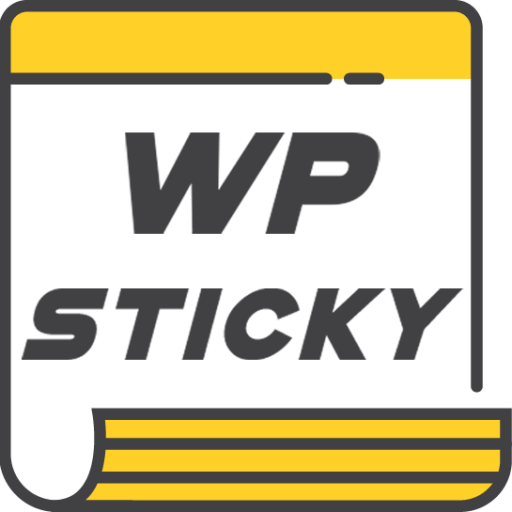When it comes to managing relationships with donors and supporters, nonprofit organizations need a robust and efficient system in place. Two popular options in the market are Blackbaud CRM and Raiser’s Edge, both developed by Blackbaud Inc., a leader in nonprofit software solutions. While they share common features and functionalities, there are distinct differences between the two platforms that organizations should consider when deciding which one is best suited for their needs. In this article, we will delve into the key contrasts between Blackbaud CRM and Raiser’s Edge, helping nonprofits make an informed decision about which system will optimize their fundraising efforts and drive their mission forward.
Overview of Blackbaud CRM and Raiser’s Edge
At first glance, Blackbaud CRM and Raiser’s Edge may seem like two similar software platforms designed for the same purpose – managing and cultivating donor relationships for nonprofit organizations. However, a closer look reveals that these platforms offer distinct functionalities that cater to different needs.
Blackbaud CRM is a comprehensive constituent relationship management system that goes beyond fundraising and donor management. It offers robust features such as membership management, marketing automation, event planning, financial accounting, and analytics. In essence, Blackbaud CRM provides nonprofits with an all-in-one solution for managing their entire organization. This platform is ideal for large organizations with complex needs and multiple departments that require a centralized system to streamline operations.
On the other hand, Raiser’s Edge is primarily focused on fundraising and donor management. It offers tools to track donations, manage campaigns and appeals, generate reports on fundraising efforts, and segment donors based on various criteria. Raiser’s Edge excels in its ability to provide nonprofits with detailed insights into their fundraising efficiency and effectiveness. This platform is suitable for smaller organizations that prioritize fundraising activities above all else.
In summary, while both Blackbaud CRM and Raiser’s Edge offer valuable solutions for nonprofit organizations looking to enhance their donor relationships, they differ in terms of functionality and scope. Choosing between the two ultimately depends on the specific needs of your organization – whether you require a more comprehensive system or just need specialized tools in the realm of fundraising.

Features: Highlighting key functionalities of both systems
One of the key features of Blackbaud CRM is its comprehensive constituent management system. With this, organizations can store and manage all relevant information about their constituents in one centralized location. This includes contact details, communication preferences, giving history, engagement levels, and more. By having all this data readily accessible, organizations can better understand and engage with their supporters, ultimately strengthening relationships.
On the other hand, Raiser’s Edge boasts a powerful donor management system. It not only allows organizations to track donations but also provides robust reporting and analysis tools. These features enable nonprofits to gain insights into donor giving patterns, identify trends and opportunities for strategic fundraising initiatives. Additionally, Raiser’s Edge offers automation capabilities that streamline administrative tasks such as gift entry and acknowledgment letter generation.
Both systems have strengths in different areas when it comes to functionality. While Blackbaud CRM offers comprehensive constituent management tools that help organizations build stronger relationships with supporters, Raiser’s Edge excels in donor management with its sophisticated reporting capabilities. Depending on an organization’s specific needs and goals, they may find one system more advantageous over the other.
Target Audience: Identifying who each system is best suited for
When it comes to determining the target audience for each system, it is important to consider the specific needs and goals of your organization. Blackbaud CRM is an ideal solution for larger nonprofits or institutions that require a comprehensive and robust constituent relationship management platform. Its advanced features and scalability make it suitable for organizations with complex fundraising operations and multi-faceted engagement strategies. On the other hand, Raiser’s Edge is a perfect fit for smaller nonprofits that are primarily focused on donor management and basic fundraising functions. Its simplicity and ease-of-use make it suitable for organizations that do not require the full range of features offered by Blackbaud CRM.
Furthermore, it is worth noting that Blackbaud CRM offers more customization options, allowing organizations to tailor the software to fit their unique requirements. This makes it particularly attractive to large nonprofits or institutions with specific, specialized needs. On the other hand, Raiser’s Edge provides a straightforward and user-friendly interface that requires minimal training. This makes it a great option for smaller nonprofits with limited resources or technical expertise.
In conclusion, understanding your organization’s needs and goals is essential in identifying which system is best suited for you. While Blackbaud CRM offers advanced features and customization options tailored towards large nonprofits or institutions, Raiser’s Edge provides a simpler yet highly efficient platform ideal for smaller organizations focused on donor management.

Integration: Discussing how Blackbaud CRM and Raiser’s Edge can work together
While Blackbaud CRM and Raiser’s Edge are two distinct fundraising management systems, their integration can empower organizations to maximize their fundraising efforts. By combining the robust functionalities of both platforms, nonprofits can harness a comprehensive suite of tools to effectively manage constituent relationships, streamline operations, and drive successful campaigns.
One key benefit of integrating Blackbaud CRM and Raiser’s Edge is the ability to seamlessly share data between the two platforms. This enables organizations to have a holistic view of their constituents’ interactions, preferences, and engagement levels. With this unified data at their fingertips, nonprofits can personalize communications with donors, tailor marketing strategies based on behavior patterns, and ensure targeted asks for donations that resonate with each individual donor. Such personalized interactions have been proven to foster stronger donor relationships and ultimately drive higher fundraising outcomes.
Another advantage of integrating these systems is the enhanced reporting capabilities it offers. Organizations can combine the wealth of data from both platforms to generate comprehensive reports that provide valuable insights into campaign performance, donor acquisition trends, donation distribution across different channels or programs—the list goes on. These insights enable nonprofits to make informed decisions about future strategies, identify areas for improvement in efficiency or resource allocation, and communicate impact more effectively with stakeholders.
Utilizing a Donation Receipt Template also ensures consistent and professional acknowledgment of contributions, reinforcing transparency and trust with donors.
In summary, while Blackbaud CRM and Raiser’s Edge may serve different purposes individually as standalone systems—they complement each other perfectly when integrated.
Pricing: Comparing the cost of each system
When it comes to pricing, comparing the cost of each system – Blackbaud CRM and Raiser’s Edge – requires a deeper understanding of their respective features and capabilities. Blackbaud CRM offers a wide range of functionalities, including constituent management, fundraising, marketing automation, and analytics. However, this comprehensive suite comes at a higher price point compared to Raiser’s Edge, which primarily focuses on fundraising management. While Raiser’s Edge may be more affordable for smaller organizations with limited needs, larger nonprofits that require advanced features like predictive analytics or complex integration capabilities might find value in Blackbaud CRM’s higher-priced packages.
It is essential to consider not only the upfront costs but also ongoing expenses such as implementation fees or subscription renewal costs. Both systems offer different pricing structures – Raiser’s Edge typically charges an annual subscription fee based on an organization’s size and usage requirements. In contrast, Blackbaud CRM often employs a multi-year contract model with additional fees for customization and implementation services.
Ultimately, choosing between these two systems should involve careful evaluation of your nonprofit’s specific needs and budget constraints. It is advisable to consult with experts or request quotes from both vendors to get a clear understanding of the total cost of ownership over time. By considering not only the initial price tag but also recurring expenses and long-term scalability potential, organizations can make an informed decision that aligns with their financial goals while maximizing the value they derive from their chosen system.

Pros and Cons: Examining the strengths and weaknesses of both systems
One of the strengths of Blackbaud CRM is its comprehensive functionality. It offers an all-in-one solution for nonprofit organizations, with features such as donor management, fundraising, volunteer management, event planning, and more. This can be highly beneficial for organizations looking to streamline their operations and reduce the need for multiple software platforms.
On the other hand, one potential weakness of Blackbaud CRM is its complexity. The wide range of features and customization options can make it overwhelming for new users or organizations with limited IT resources. It may require significant training and support to fully harness its capabilities. Additionally, the complex nature of the system can result in slower response times and occasional technical glitches.
Raiser’s Edge, on the contrary has a simpler interface which makes it easier to navigate compared to Blackbaud CRM’s expansive functionality but it falls short when it comes to certain areas like volunteer management where Blackbaud CRM excels at. However, Raiser’s Edge tends to have better integration capabilities with other systems due to its more standardized structure making data import/export processes relatively smoother.
Overall, both systems have their strengths and weaknesses,and choosing between them ultimately depends on individual organizational needs and priorities. Organizations seeking a robust all-in-one solution may find Blackbaud CRM appealing despite its complexity while those valuing simplicity and connectivity might prefer Raiser’s Edge with its streamlined interface and ease of integration.
Conclusion: Summarizing the main differences between Blackbaud CRM and Raiser’s Edge
In conclusion, while both Blackbaud CRM and Raiser’s Edge are powerful tools for nonprofit organizations, they differ in several key aspects. Firstly, Blackbaud CRM offers a more comprehensive and integrated solution for nonprofits, with built-in modules for fundraising, marketing, financial management, and advocacy. On the other hand, Raiser’s Edge focuses primarily on donor management and fundraising capabilities.
Secondly, Blackbaud CRM provides advanced reporting and analytics functionality that allows organizations to gain deep insights into their constituents’ behavior and engagement levels. This data-driven approach empowers nonprofits to make informed decisions and improve their overall effectiveness. Meanwhile, Raiser’s Edge offers robust fundraising features but may fall short when it comes to sophisticated analytics capabilities.
Finally, the implementation process for Blackbaud CRM can be more complex due to its all-encompassing nature. However, this initial effort pays off in the long run as it leads to greater efficiency and productivity across the organization. Conversely, Raiser’s Edge typically has a quicker implementation process but may require additional customization or integrations to meet specific needs.
Ultimately, choosing between Blackbaud CRM or Raiser’s Edge depends on an organization’s unique requirements and goals. While both platforms have their strengths and weaknesses, nonprofits should carefully evaluate these differences to select the one that best aligns with their mission and strategic objective.
